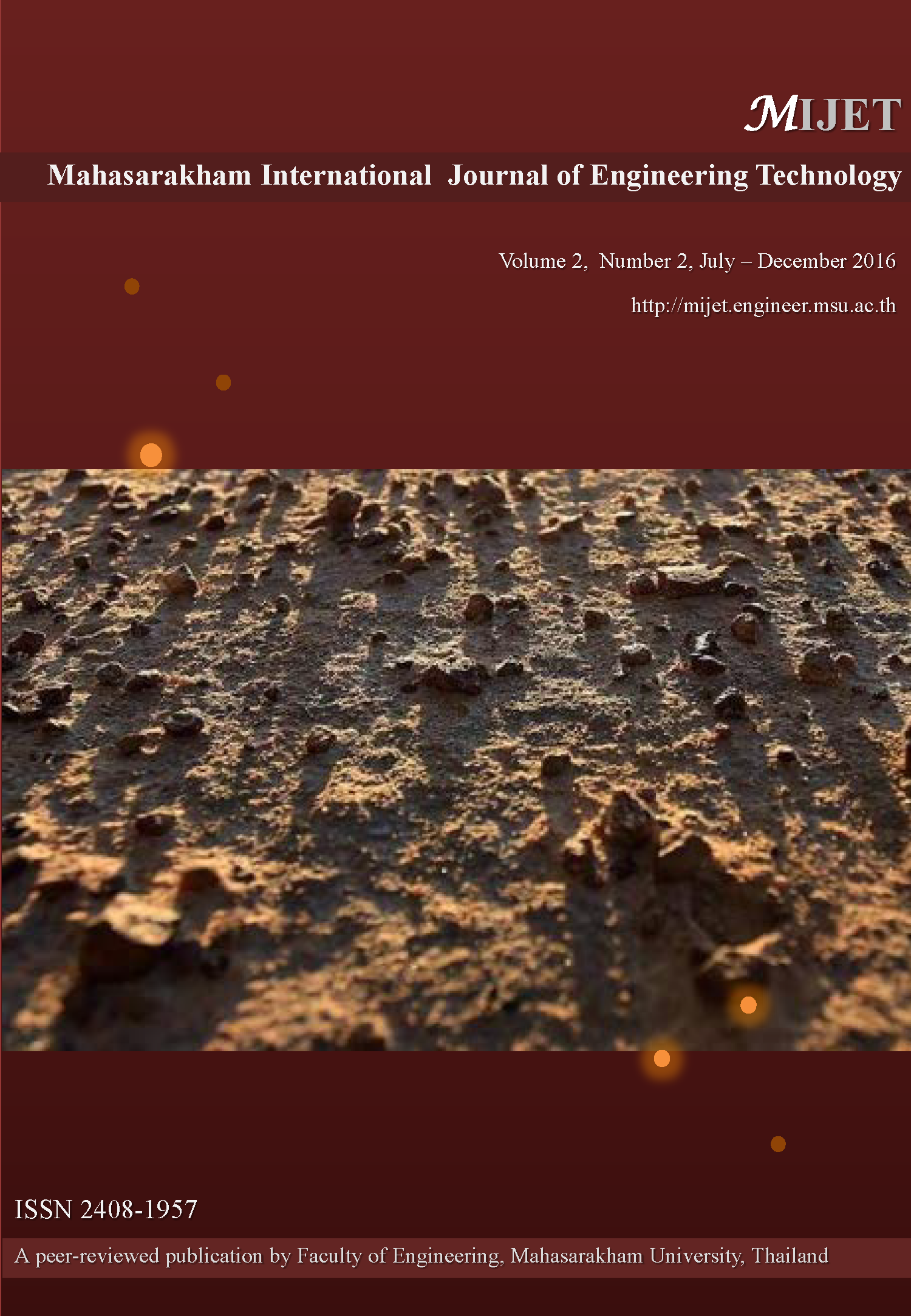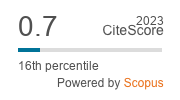Properties of Concretes with Natural and Recycled Coarse Aggregates
doi: 10.14456/mijet.2016.11
Keywords:
concrete, recycled aggregate, moisture, UPVAbstract
This research studied effects of moisture and absorption of natural and recycled coarse aggregates on properties of concretes. The effects of two moisture states, air-dried state (AD) and saturated surface dry state (SSD), of both aggregates were investigated. Recycled coarse aggregate was used to replace crushed limestone at 25 and 100 percent by volume. The compressive strength, ultrasonic pulse velocity (UPV), and modulus of elasticity of concretes were determined. The results revealed that the coarse aggregates in SSD state gave higher compressive strength than those in AD state. The moisture states of aggregate did not affect the UPV of concrete but the replacement of crushed limestone by recycled aggregate reduced the UPV. The cracks on cement paste of the recycled coarse aggregate increases the distance for wave travel passing through concrete. The modulus of elasticity of concrete is independent of the moisture states of recycled coarse aggregate but dependent on the strength of concrete.
References
NIXON, P.J. Recycled concrete as an aggregate for concrete a review. Materials and Structures, 1978, vol. 11, No. 5, p. 371–378.
HANSEN, T.C., NARUD, H. Strength of recycled concrete made from crushed concrete coarse aggregate. Concrete International: Design and Construction, 1983, vol. 5, no. 1, p. 79–83.
SOMNA R., JATURAPITAKKUL. C., CHALEE, W. RATTANACHU, P. Effect of the water to binder ratio and ground fly ash on properties of recycled aggregate concrete. Journal of Materials in Civil Engineering, 2012, vol. 24, no. 1, p. 16-22.
HANSEN, T.C., BOEGH, E. Elasticity and drying shrinkage of recycled aggregate concrete. Journal of American Concrete Institute, 1985, vol. 82, no. 5, p. 648–652.
KATZ, A. Properties of concrete made with recycled aggregate from partially hydrated old concrete. Cement and Concrete Research, 2003, vol. 33, no. 5, p. 703–711.
SALEM, R.M., BURDETTE, E.G. Role of chemical and mineral admixtures on physical properties and frost-resistance of recycled aggregate concrete. ACI Materials Journal, 1998, vol. 95, no. 5, p. 558-563.
ETXEBERRIA, M.C., MARI, A.R., and VAZQUEZ, E. Recycled aggregate concrete as structural materials. Materials and Structures, 2007, vol. 40, p. 529-541.
SALEM, R.M., BURDETTE, E.G., JACKSON, N.M. Resistance to freezing and thawing of recycled aggregate concrete. ACI Materials Journal, 2003, vol. 100, No. 3, p. 216–230.
American Concrete Institute Committee, Standard Practice for Selecting Proportions for Normal, Heavyweight, and Mass Concrete (ACI 211.1-91), ACI 211.1, Detroit, p. 38, 2005.
ABRAMS, D.A. Design of concrete mixtures, Bulletin 1, Structural Materials Laboratory. Lewis Institute, Chicago, Revised Edition, 1998.
LIMBACHIYA, M.C., LEELAWAT T., DHIR, R.K. Use of recycled concrete aggregate in high-strength concrete. Materials and Structures, 2000, vol. 33, p. 574–580.








